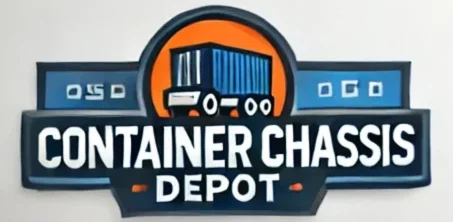The Importance of Safety When Using Container Chassis
Container chassis plays a crucial role in the transportation and logistics industry, serving as the backbone for moving shipping containers from ports to warehouses and distribution centers. While these vehicles are designed for efficiency and durability, safety remains a paramount concern for operators and stakeholders alike. Maximizing safety when using container chassis is essential not only to protect the cargo but also to ensure the well-being of drivers and other road users. This article presents expert tips on how to enhance safety when utilizing container chassis, focusing on maintenance, operational practices, driver training, and regulatory compliance. Reliable Suppliers of Container Chassis
Maintenance: The Foundation of Safety when Using Container Chassis
Regular maintenance is fundamental to ensuring the safety of container chassis. Operators should establish a routine inspection schedule that includes checking critical components such as brakes, tires, lights, and suspension systems. Experts recommend conducting pre-trip inspections to identify any potential issues before hitting the road. This proactive approach can prevent accidents caused by mechanical failures.
In addition to daily inspections, periodic comprehensive maintenance should be performed by qualified technicians. This includes lubrication of moving parts, alignment checks, and replacement of worn-out components. Keeping detailed maintenance records not only helps in tracking the condition of the chassis but also serves as documentation for regulatory compliance.
Moreover, operators should pay close attention to the condition of the tires. Proper tire inflation and tread depth are vital for maintaining traction and stability while driving. Under-inflated or worn tires can lead to blowouts or loss of control, particularly when navigating sharp turns or adverse weather conditions. Regular tire rotations and alignments can further enhance safety by ensuring even wear and optimal performance.
Operational Practices: Enhancing Safety on the Road when using container chassis
Safe operational practices are equally important in maximizing safety when using container chassis. One key aspect is understanding load distribution. Overloading or unevenly distributing cargo can significantly affect the vehicle’s handling characteristics. Operators should adhere to weight limits specified by manufacturers and ensure that loads are secured properly to prevent shifting during transit. Buy Container Chassis Online
Additionally, drivers should be trained to recognize the unique handling characteristics of container chassis. These vehicles may behave differently than standard trucks, particularly when cornering or braking. Familiarity with the vehicle’s dimensions and turning radius is essential for safe navigation in tight spaces or urban environments.
Another critical operational practice is maintaining a safe following distance. Container chassis can take longer to stop than lighter vehicles due to their weight and load. Drivers should adjust their speed according to road conditions and traffic flow, allowing ample space between their cars and others on the road. This practice not only enhances safety but also provides drivers with more time to react to unexpected situations.
Driver Training: Equipping Personnel for Safety when Using Container Chassis
Investing in comprehensive driver training programs is vital to maximizing safety when using container chassis. Training should cover various aspects, including vehicle operation, safety protocols, and emergency response procedures. Experienced trainers can provide valuable insights into best practices and common pitfalls that drivers may encounter.
Moreover, training should emphasize the importance of situational awareness. Drivers must be vigilant about their surroundings, including other vehicles, pedestrians, and road conditions. Encouraging defensive driving techniques can help mitigate risks associated with sudden stops or unexpected obstacles.
Regular refresher courses are also beneficial in keeping drivers updated on new regulations, technologies, and safety practices. As the logistics industry evolves, staying informed about changes can significantly enhance safety outcomes. Additionally, fostering a safety culture within the organization encourages drivers to prioritize safe practices and report any concerns related to equipment or road conditions.
Regulatory Compliance: Adhering to Standards
Compliance with local, state, and federal regulations is essential for ensuring safety when using container chassis. Operators should familiarize themselves with relevant laws governing weight limits, equipment standards, and driver qualifications. Regular audits can help identify areas where compliance may be lacking and provide opportunities for improvement.
In many regions, specific regulations apply to the transport of hazardous materials or oversized loads. Understanding these requirements is crucial for avoiding legal penalties and ensuring public safety. Operators should maintain up-to-date documentation

